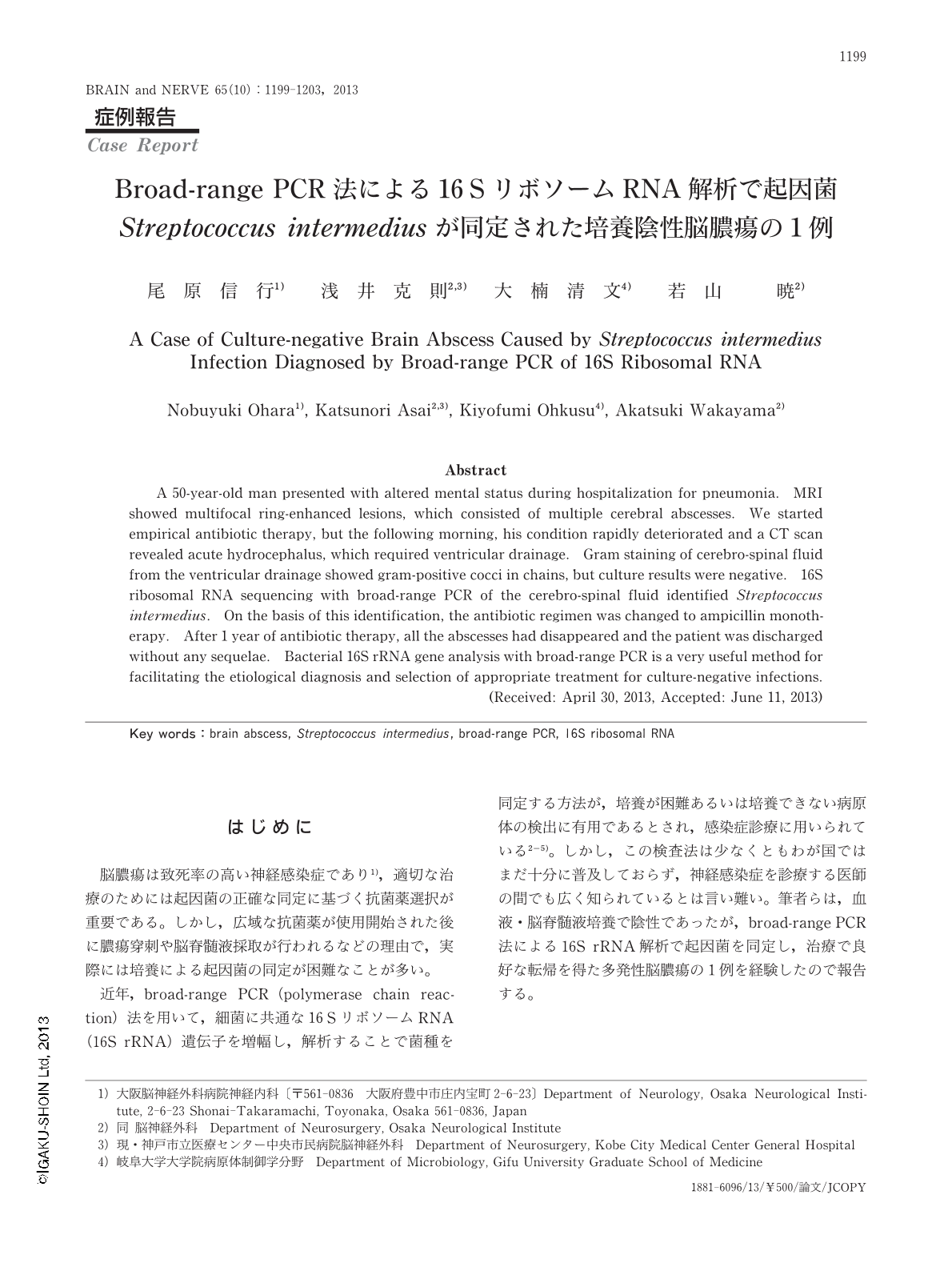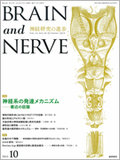Japanese
English
- 有料閲覧
- Abstract 文献概要
- 1ページ目 Look Inside
- 参考文献 Reference
はじめに
脳膿瘍は致死率の高い神経感染症であり1),適切な治療のためには起因菌の正確な同定に基づく抗菌薬選択が重要である。しかし,広域な抗菌薬が使用開始された後に膿瘍穿刺や脳脊髄液採取が行われるなどの理由で,実際には培養による起因菌の同定が困難なことが多い。
近年,broad-range PCR(polymerase chain reaction)法を用いて,細菌に共通な16SリボソームRNA(16S rRNA)遺伝子を増幅し,解析することで菌種を同定する方法が,培養が困難あるいは培養できない病原体の検出に有用であるとされ,感染症診療に用いられている2-5)。しかし,この検査法は少なくともわが国ではまだ十分に普及しておらず,神経感染症を診療する医師の間でも広く知られているとは言い難い。筆者らは,血液・脳脊髄液培養で陰性であったが,broad-range PCR法による16S rRNA解析で起因菌を同定し,治療で良好な転帰を得た多発性脳膿瘍の1例を経験したので報告する。
Abstract
A 50-year-old man presented with altered mental status during hospitalization for pneumonia. MRI showed multifocal ring-enhanced lesions, which consisted of multiple cerebral abscesses. We started empirical antibiotic therapy, but the following morning, his condition rapidly deteriorated and a CT scan revealed acute hydrocephalus, which required ventricular drainage. Gram staining of cerebro-spinal fluid from the ventricular drainage showed gram-positive cocci in chains, but culture results were negative. 16S ribosomal RNA sequencing with broad-range PCR of the cerebro-spinal fluid identified Streptococcus intermedius. On the basis of this identification, the antibiotic regimen was changed to ampicillin monotherapy. After 1 year of antibiotic therapy, all the abscesses had disappeared and the patient was discharged without any sequelae. Bacterial 16S rRNA gene analysis with broad-range PCR is a very useful method for facilitating the etiological diagnosis and selection of appropriate treatment for culture-negative infections. (Received: April 30, 2013, Accepted: June 11, 2013)

Copyright © 2013, Igaku-Shoin Ltd. All rights reserved.


